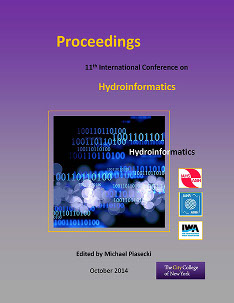Document Type
Presentation
Publication Date
8-1-2014
Abstract
Through application of computational methods and an integrated information system, real-time data and river modeling systems can help decision makers identify more effective actions for management practice. The purpose of this study is to develop a real-time decision support model to recommend optimal curtailments during water shortages for decision makers. To enable ease of use and re-use, the workflows (i.e., analysis and model steps) of the real-time decision support model are published as Web services delivered through an internet browser, including model inputs, a published workflow service, and visualized outputs. The model consists of two major components: the real-time river flow prediction system and the optimization model. The RAPID model, which is a river routing model developed at University of Texas Austin for parallel computation of river discharge, is applied to predict real-time river flow rates. The workflow of the RAPID model has been built and published as a Web application that allows non-technical users to remotely execute the model and visualize results as a service through a simple Web interface. An optimization model is being developed to provide real-time water withdrawal decision support using the RAPID output and the clustering particle swarm optimization algorithm (CPSO) and genetic algorithm methods. The model is being tested using historical drought data from 2011 in the Upper Guadalupe River Basin in Texas. The objective of the optimization is to assist the Texas Commission on Environmental Quality (TCEQ) in minimizing the total daily curtailment hours of all permit holders, with constraints on user seniority and ecological river flow. The optimization model workflows is linked to the RAPID model workflow to provide real-time water decision support services. Finally, visualization of the output using Bing-map and WorldWide Telescope helps decision makers predict outcomes from alternative weather or policy scenarios.



Comments
Session R62, Integrated Watershed Management